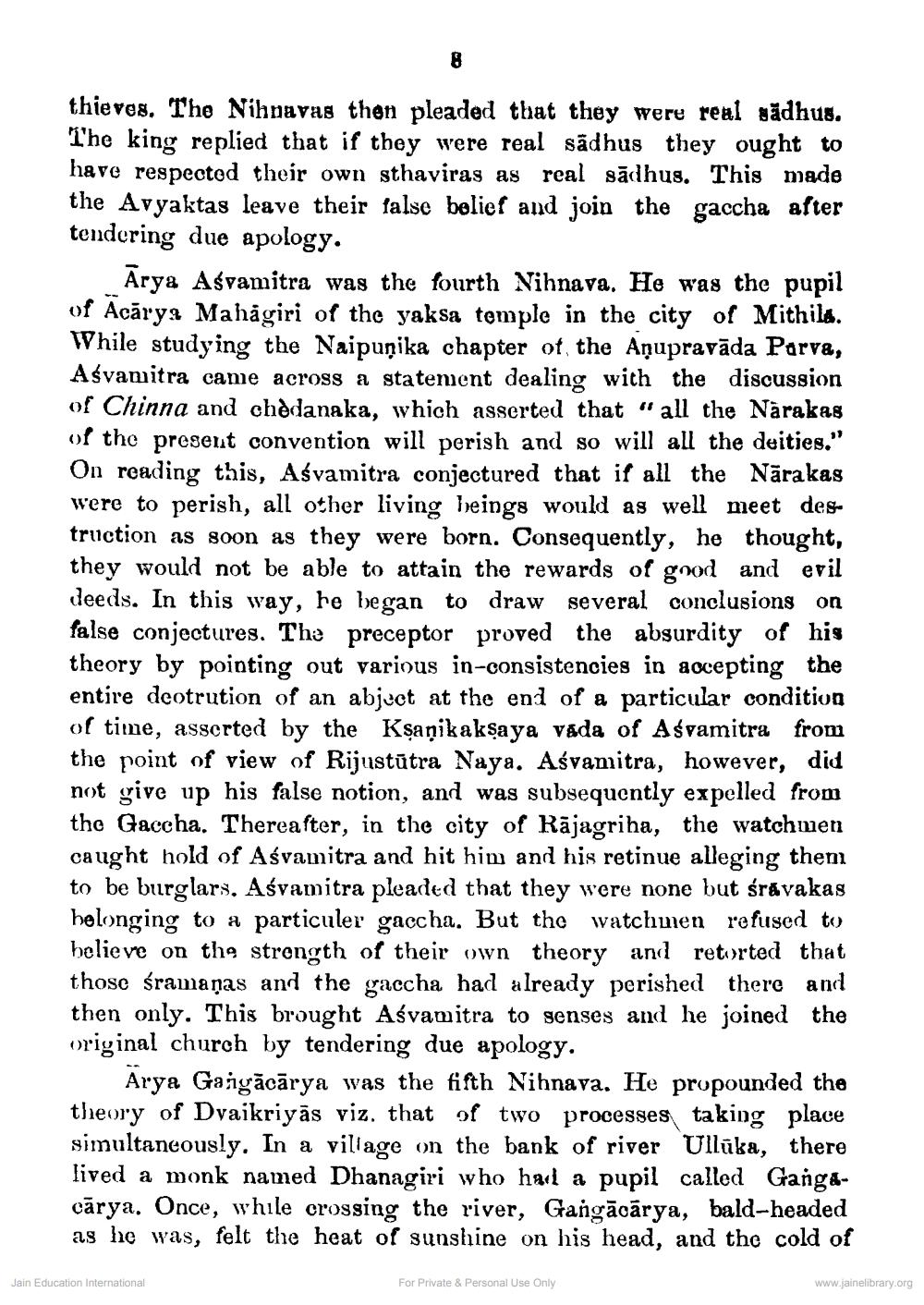________________
thieves. The Nihnavas then pleaded that they were real pådhus. The king replied that if they were real sādhus they ought to have respected their own sthaviras as real sādhus. This made the Avyaktas leave their false belief and join the gaccha after tendering due apology.
Ārya Aśvamitra was the fourth Nihnava. He was the pupil of Acārya Mahagiri of the yaksa temple in the city of Mithila. While studying the Naipuņika chapter of the Aņupravāda Parva, Aśvamitra came across a statement dealing with the discussion of Chinna and chedanaka, which asserted that "all the Narakas of the present convention will perish and so will all the deities." On reading this, Aśvamitra conjectured that if all the Nārakas were to perish, all other living beings would as well meet destruction as soon as they were born. Consequently, he thought, they would not be able to attain the rewards of good and evil deeds. In this way, he began to draw several conclusions on false conjectures. The preceptor proved the absurdity of his theory by pointing out various in-consistencies in accepting the entire deotrution of an abject at the end of a particular condition of time, asserted by the Kṣaṇikakşaya vada of Asvamitra from the point of view of Rijustūtra Naya. Aśvamitra, however, did not give up his false notion, and was subsequently expelled from the Gaccha. Thereafter, in the city of Rājagriha, the watchmen caught hold of Aśvamitra and hit him and his retinue alleging them to be burglars. Aśvamitra pleaded that they were none but śravakas helonging to a particuler gaccha. But the watchmen refused to believe on the strength of their own theory and retorted that those śramaņas and the gaccha had already perished there and then only. This brought Aśvamitra to senses and he joined the original church by tendering due apology.
Arya Gaigācārya was the fifth Nihnava. He propounded the theory of Dvaikriyās viz. that of two processes taking place simultaneously. In a village on the bank of river Ullūka, there lived a monk named Dhanagiri who had a pupil called Gangacārya. Once, while crossing the river, Gangācārya, bald-headed as he was, felt the heat of sunshine on his head, and the cold of
Jain Education International
For Private & Personal Use Only
www.jainelibrary.org




